Janiuay launches 'Lanot' Festival
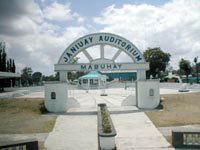
Janiuay, Iloilo -- Nestled in the province of Iloilo, 29 kilometers away from the city, Janiuay has a colorful history that stretches back to a rich pre-colonial culture and the arrival of the first settlers around 427 years ago. The number of tribal groups in Panay makes the ethnic landscape of most towns. For Janiuay, it was said that the first inhabitants were composed of two barangays led by Datu Pagdakton who, with close relatives and followers, escaped the marauding hordes of moros and white men and settled in 'Quipot'---now popularly nown as the entry-point barangay reaching one of the municipality's natural wonder, the hidden crystal-clear Igbiating waterfall.
It wasn't until 1738 that serious Spanish colonization of the municipality began. Spanish Governor General Francisco Javier de la Torre ordered for the establishment of territorial areas and in 1770, the town became a firmly established municipality.
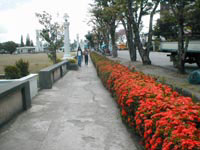
Historical researchers believed the name Haniway was derived from 'Han,' the son of a renowned and revered Datu and 'Aniway,' a beautiful dayang, whose bethrotal was tragically shattered by a conflict between their clans.
Situated in the central part of Iloilo and inhabited by 54,166 (2000 Census on Population) Janiuaynons, the area is bounded in the south by Cabatuan, Maasin in the southwest, in the east by Mina, Lambunao in the north and the Province of Antique in the west. This 60-barangay town occupying a land area of 17,910 hectares, offer areas of historical significance that will surely get visitors a real sense of the provinces' colorful and rich history.
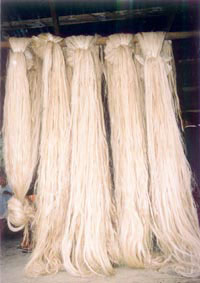
Redolent of a grander age, the ancient Catholic Cemetery, dating back to 1884, is one of the most artistic cemeteries in the Philippines. Renowned for its architectural grandeur, it was once featured in the pages of National Geographic magazine.
The wonderfully atmospheric old structure of the Janiuay Catholic Church, impressive in its simplicity was built between 1830 and 1871. Devastated during the Second World War, its edifice presently needs rehabilitation.
Standing as a testimony to the ferocious combat launched by Japanese forces during the Second World War are the two Japanese Watch Towers, situated at both ends of the Suage bridge.
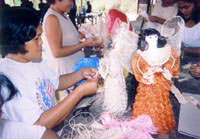
The area of Barangay Barasalon trades heavily for its tourist custom on the wonder of its waterfalls. Located 27 kilometers away from the Poblacion, the Igbiating waterfalls become a wallowing area for visitors, especially at the weekend.
Identifiable by its unusual shape, rather like human lungs are two big stones blocking the Suage River. Punong situated at Barangay Quipot is as high as a three-storey building, a perfect spot to camp out and watch the sun rise.
Known to have the liveliest and most welcoming festivals in the country, each year, local and foreign tourists go to Iloilo to see these spectacles. A major attraction in this celebration is often the street-dancing competition, an exuberant cultural show for locals and visitors alike. It's memorable and deafening spectacle of dressed tribes dancing through the streets to the sound of indigenous instruments. And Janiuay, being one of the strong provincial centers for tourism attractions in this part of Iloilo will be sharing to the provinces' sustained frenzy of music and dancing in celebration of their good fortune thru their first LANOT Festival.
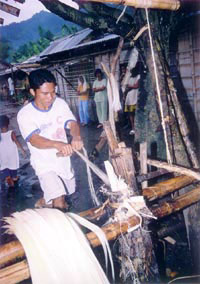
Unlike their former SADSAD SA KALYE festival launched in 2000, LANOT Festival (Exec. Order No. 2005-22) aims to bring public awareness on its multi-level relevance to all aspects of human endeavor to generate a continuous livelihood development in conjunction with the implementation and sustenance of Abaca resource management program for an economically stable Janiuaynons.
Lanot, also known as Abaca fiber is a by-product extracted from abaca. It is durable, saltwater-resistant and versatile wherein the use of this fiber dates back to Hispanic times when it was made as docking ropes to Spanish galleons. Presently, the town is making export-quality products such as bags, hats and slippers and other home decors.
The up-coming LANOT Festival remains true to its culture without giving in to pressures of looking 'just like the other municipal festivals' to impress visitors and guests. The festival committee headed by their ever-supportive Municipal Mayor, Hon. DR. BIENVENIDO P. MARGARICO chooses to exploit the inherent qualities of the Janiuay way of life through a rich display of their main product on December 10, 2005 as the people of Janiuay take pride in sharing their town's blessings to everyone through the launching of their LANOT Festival, Festival of Lights and the Grand Finals of Search for Janiuay Pop Superstar.
